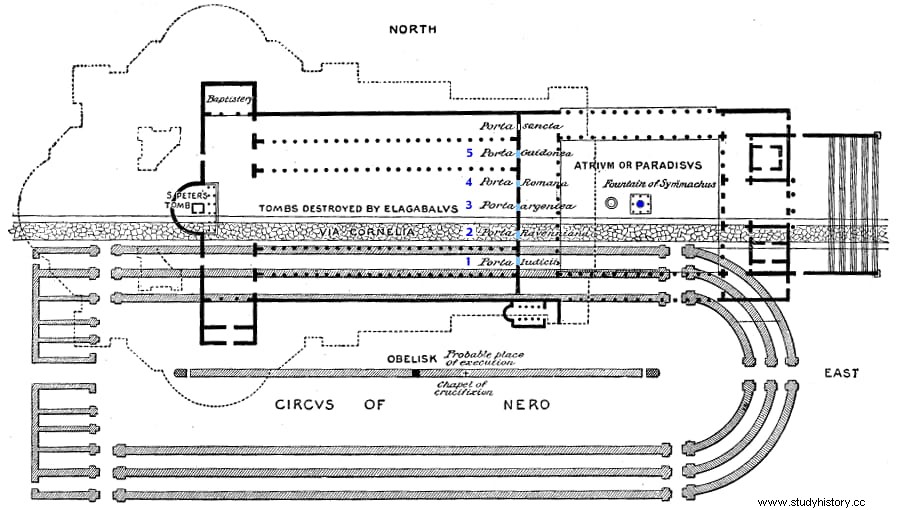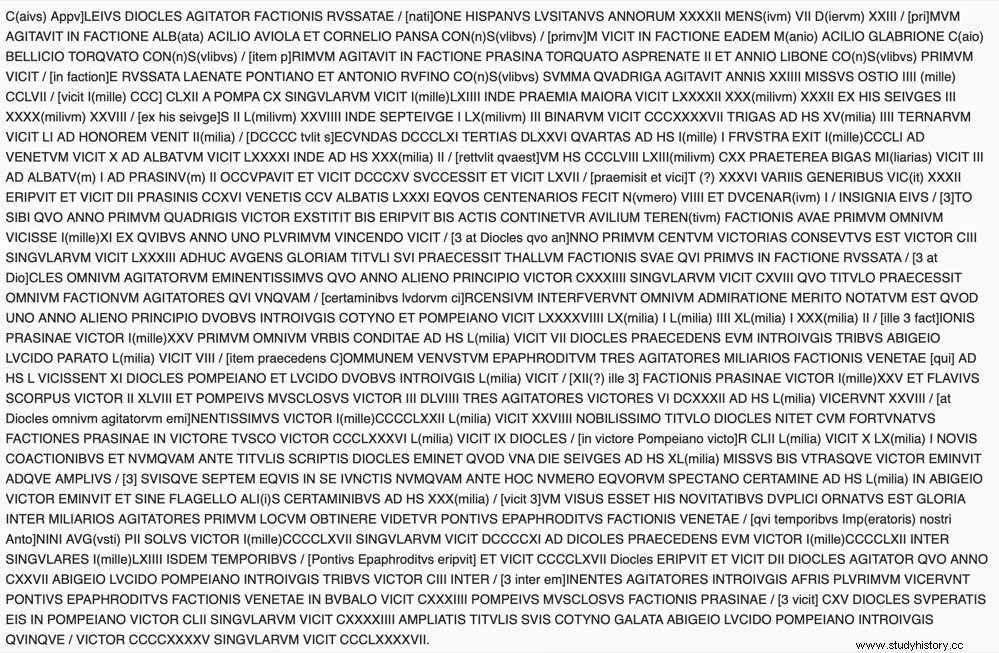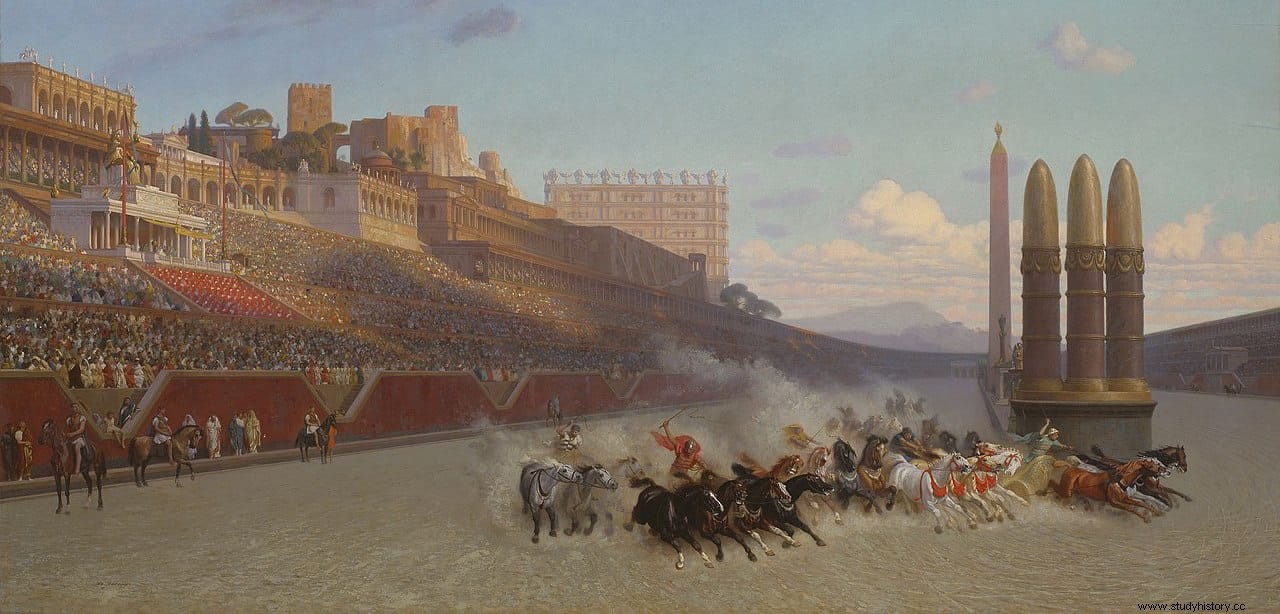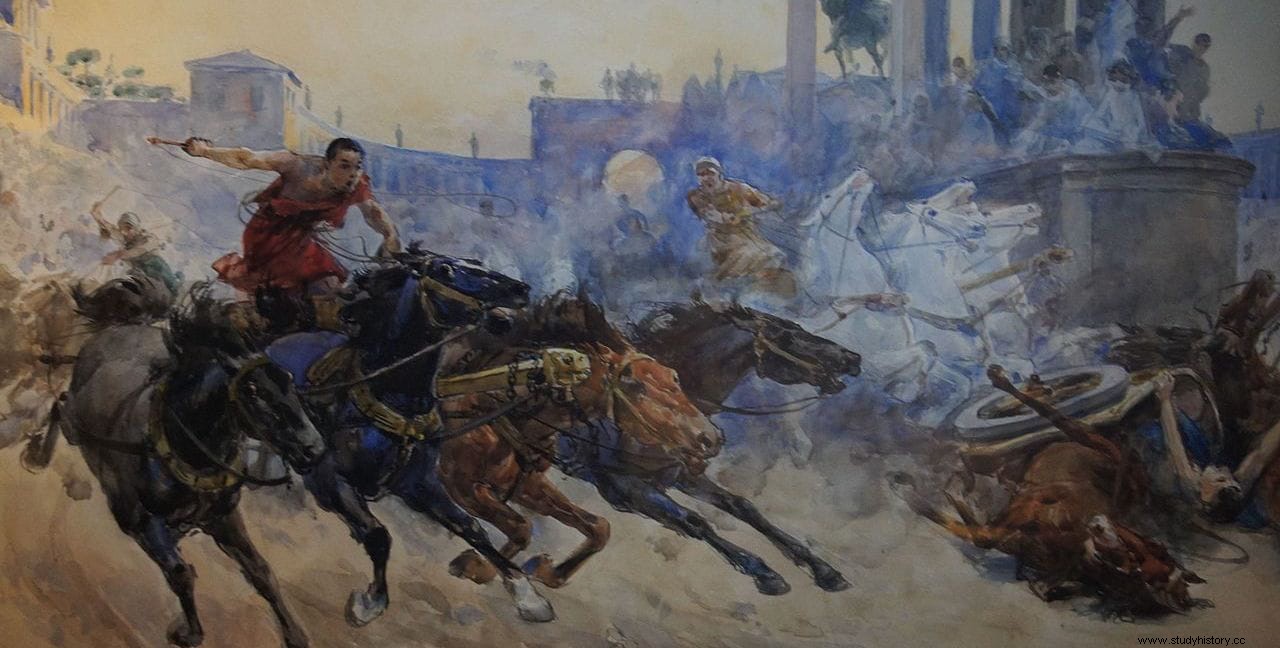Almost certainly they will not know it, but Fernando Alonso, Michael Schumacher, Ayrton Senna and all the car champions, whether in Formula 1 or other specialties, had a historical predecessor who surpassed them all in triumphs and fame, and also with a lot of amplitude. We are referring to Gaius Apuleius Diocles, the most famous charioteer of antiquity, a Hispanic who aroused true passion among racing fans. And without the need for television broadcasting.
We do not know much about him and the sources for the few available data are only two, two epigraphic inscriptions from the ruins of Palestrina and Rome. The first is a stela found in the sanctuary of Fortuna Primigenia, located in that Lazio municipality and built in the 2nd century BC. -it is believed that under Sulla's mandate- on a previous place of worship (part of its surface was later occupied by the Palazzo Barberini).
The goddess Fortuna was very peculiar, daughter and mother of Jupiter at the same time, so there was a great devotion to her among all those who needed luck for something. It is understood that the charioteers came to her in search of her favor for her risky trade.

Gaius Apuleius Diocles did it often, surely. However, the inscription corresponds to the last period of his life, when he had already retired from racing to enjoy his well-earned riches and his social prestige. The text says:
It can be translated as «Present offered to Fortuna Primigenia by Gaius Apuleius Diocles, the first charioteer of the red team, a Hispanic nation. The children of him Gaius Apuleius Nimfidian and Nimfidia «. The origin of Diocles is made explicit, just as we find out the name of his two offspring, who were the ones who commissioned a statue in honor of his father for which that stele was the base. A posthumous honor to whom he had bequeathed a fortune and it is not known how or under what circumstances he died. If anything, it is ventured that his death occurred after 146 A.D., which would mean that he lived about forty-two years, since the date of birth is circa AD 104 Precisely the other documentary source, also made at her death in all probability, speaks of 42 years, 7 months and 23 days.

That second document is also epigraphic, we said:a larger tombstone that, therefore, contains much more biographical information. It was on a wall of the Circus of Nero, the private stadium that Caligula began to build on the Vatican Hill (then outside the walls), in the villa belonging to her mother, Agrippina the Elder , but he finished his nephew.
The circus, decorated with an obelisk brought from Egypt (the same one that is in St. Peter's Square today, since the basilica was built on top), was private, although sometimes it was opened to the public and that is why fans raised there plaques in honor of their favorite charioteers.
Actually, that of Diocles has been lost and what we have today are copies of its contents. But it has enormous value, since it constitutes one of the most direct testimonies about chariot racing in general and about this character in particular.

And what does it tell us? In the first place, it identifies him as a Hispanic-Lusitanian, which is somewhat inconclusive and that is why some place his birth in Lamecum (present-day Lamego, Portugal) and others -in some novel, rather- in Emérita Augusta (present-day Mérida, Spain), most likely for the former because he was nicknamed the Lamecus (in fact, a statue has been dedicated to him there), although it is possible that he began his professional life in the Spanish city, capital of the Lusitanian province (others point, however, to Ilerda, Lleida).
As Diocles is a name of Greek origin (not necessarily from mainland Greece), he may have descended from a family of freedmen (his father was a minor carrier), something common among athletes of his time. In any case, the text says that he debuted in the world of racing as consuls Acilio Aviola and Cornelio Pansa, in 122 AD, when he was about 18 years old; a reasonable age because he used to start very young -even more so-, although he did not win his first competition until two years later, during the consulate of Manio Acilio Glabrión and Cayo Belicio Torcuato.

In those beginnings he militated in the white faction. The stele goes to great lengths to detail which team he ran for at each stage of his life because it was important, as each of the factions , identified with a color (white, blue, green and red:in Byzantine times two more would be added ephemerally), dragged behind it large masses of sympathizers, unconditional and exalted to the extreme:furor circensis , was called the fights in which that rivalry used to end.
In 128 Diocles switched to green but it would not be until 131, already part of red, when he began to chain one victory after another. Given that the Palestrina stela only mentions his militancy in the red faction, it is possible that he refers only to his most successful stage or that in the other inscription they do not speak of teams but of sponsors, as the historian and Jesuit Juan Francisco Masdeu proposed. in 1790.
The text says that he spent 24 years driving chariots, that is, chariots pulled by four horses, taking the start 4,257 times and winning no less than 1,462 times, leaving the rest basically in second position or, failing that, among the first four. . 110 of those wins were pomp , that is, in the first equestrian races that were held every day, the most prestigious (and best paid). Likewise, it is detailed that 1,064 of his victories were obtained in singular races , those in which only the best took part, one for each team, sometimes substituting the chariot for the follow (six-horse chariot); in fact, it is described that he drove vehicles of up to seven animals.

According to what the inscription indicates, Diocles went through the other factions , winning with all large sums and making famous both illustrious opponents whom he defeated (for example Avilio Terencio, from his own team) as well as some equines that he used (case of one he made ducenarius , that is, champion in 200 races, although he has not revealed his name; but of the five he once yoked together for one of his most brilliant victories:Pompeiano , Abigeio , Lucid , Cotino and Galata ).
He also won races starting last and coming from behind, something he did deliberately for the sake of show. All this made him go down in history for his “feats and marks never before recorded” , including winning twice on the same day. The latter is a great merit, considering that each test involved risking their lives and most of the charioteers died soon, since the speed reached and the low weight of the car made the naufragium frequent. (overturning) and since the charioteers had their reins wound around their torsos, they used to end up dragged by the horses in their mad gallop without having time to use the knife they carried to cut them (the helmet and the bandages on the arms and legs were nothing more than poor protection).
Thus, Diocles surpassed other racing legends such as the blue Pontius Epaphroditus or the green Muscular Pompey (who recorded more victories but of lesser category) and accumulated fabulous wealth whose total would be around 35 million sesterces. According to calculations, today they would be equivalent to about 15,000 million dollars and, in any case, they were enough to pay the annual supply of grain to the entire city of Rome or pay a fifth of its military budget for a year. Without a doubt, the highest paid athlete of all time.
